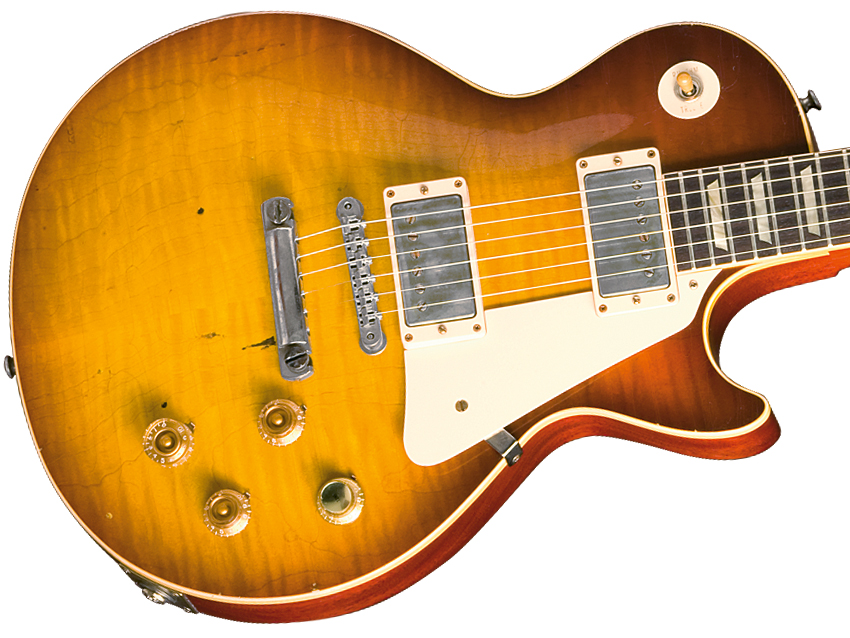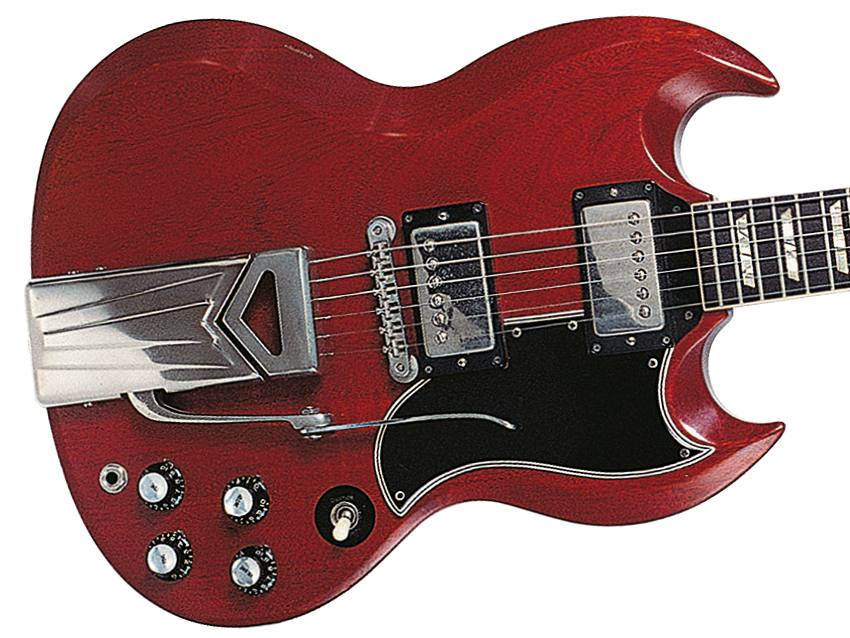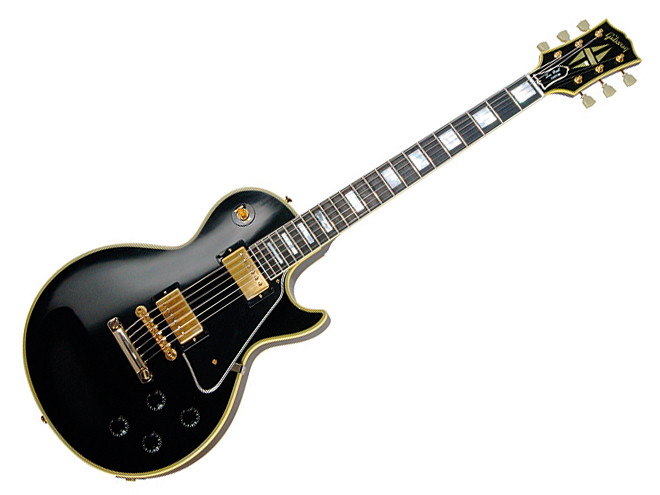Gibson Les Paul: an evolution in pictures
A radically changed guitar, but always iconic…

Gibson Les Paul: an evolution in pictures
The venerable Gibson Les Paul Standard has become perhaps the most iconic electric guitar of all time, right up there with Fender’s celebrated Stratocaster. While the latter was all but spot-on from the get-go, the Les Paul took six years and a number of significant changes to evolve - and even then it wasn’t popular until Clapton!
Today, of course, Gibson produces all manner of Les Paul variants, not least new versions of most of the guitars mentioned here. For now, let’s rewind to 1952 and find out how it all happened…

Les Paul Model 1952-1953
The first Les Paul was nearly fully formed: the shape, build, scale length and control layout were spot-on. But the bridge/ tailpiece was a cock-up. Designed by Les Paul, it should have had the strings going over it (as shown in the patent document) but due to an incorrect neck pitch they went under, making palm muting - a key part of Les’s style - impossible.
Single-coil P-90s were the pickup choice and Goldtop was the only finish offered.

Les Paul Model 1953-1955
The bridge/tailpiece of the first model wasn’t corrected until late in 1953, when the Ted McCarty-designed ‘wrapover’ stud bridge/tailpiece was added. Apparently the neck pitch was initially still too shallow and wasn’t cured until early 1954.
With both fixes in place, however, the Les Paul began to show its true potential.

Les Paul Model 1955-1957
The third incarnation again focused on the bridge/tailpiece and it was this one that added the now iconic tune-o-matic bridge, again designed by Ted McCarty and the Gibson engineers; the previous stud wrapover became the string anchor and it was originally intended for the strings to pass over the top.

Les Paul Model 1957-1958
Single-coils pick up a fair bit of hum, and it was in 1957 that the now legendary Seth Lover-designed Gibson humbucker was added to the Les Paul. Incidentally, when the ‘Patent Applied For’ stickers of the initial pickups changed during 1962, Gibson applied the patent number (2,737,842) of Les Paul’s original trapeze bridge as a ‘smokescreen’.

Les Paul Standard 1958-1960
The final change was, of course, the guitar’s finish. In mid 1958 the original Goldtop (with natural or lightly toned sides, back and neck, although all-gold examples exist) was swapped for a cherry red sunburst with red-stained sides, back and neck.
The pigment faded, resulting in the browner and even ‘unburst’ examples that survive today. It was only during the Standard’s last year of production that a more stable dye was found.

Les Paul Standard 1960-1963
Amazingly with hindsight, the finish change did nothing to popularise the model and in 1960 the more radical ‘SG’ style was introduced with its thinner, all-mahogany body, pointed horns and 22 frets clear of the body. It became the SG Standard in 1963.
Gibson didn’t reintroduce a single-cut Les Paul until later in the decade, after Clapton and Bloomfield had repopularised it.
And there’s more, much more…

1961-1963 Les Paul Junior
SG-shaped, but with Les Paul markings, this is a visceral, stripped-down rock machine.
Liked this? Now read: 29 Les Paul legends
Connect with MusicRadar: via Twitter, Facebook and YouTube
Get MusicRadar straight to your inbox: Sign up for the free weekly newsletter
Dave Burrluck is one of the world’s most experienced guitar journalists, who started writing back in the '80s for International Musician and Recording World, co-founded The Guitar Magazine and has been the Gear Reviews Editor of Guitarist magazine for the past two decades. Along the way, Dave has been the sole author of The PRS Guitar Book and The Player's Guide to Guitar Maintenance as well as contributing to numerous other books on the electric guitar. Dave is an active gigging and recording musician and still finds time to make, repair and mod guitars, not least for Guitarist’s The Mod Squad.





